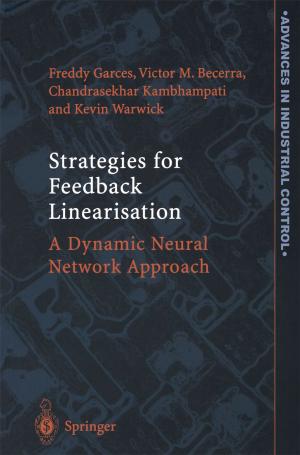Condition Monitoring Using Computational Intelligence Methods
Applications in Mechanical and Electrical Systems
Nonfiction, Science & Nature, Technology, Machinery, Computers, Advanced Computing, Artificial Intelligence| Author: | Tshilidzi Marwala | ISBN: | 9781447123804 |
| Publisher: | Springer London | Publication: | January 25, 2012 |
| Imprint: | Springer | Language: | English |
| Author: | Tshilidzi Marwala |
| ISBN: | 9781447123804 |
| Publisher: | Springer London |
| Publication: | January 25, 2012 |
| Imprint: | Springer |
| Language: | English |
Condition Monitoring Using Computational Intelligence Methods promotes the various approaches gathered under the umbrella of computational intelligence to show how condition monitoring can be used to avoid equipment failures and lengthen its useful life, minimize downtime and reduce maintenance costs. The text introduces various signal-processing and pre-processing techniques, wavelets and principal component analysis, for example, together with their uses in condition monitoring and details the development of effective feature extraction techniques classified into frequency-, time-frequency- and time-domain analysis. Data generated by these techniques can then be used for condition classification employing tools such as:
•
fuzzy systems; rough and neuro-rough sets; neural and Bayesian networks;hidden Markov and Gaussian mixture models; and support vector machines.
Condition Monitoring Using Computational Intelligence Methods promotes the various approaches gathered under the umbrella of computational intelligence to show how condition monitoring can be used to avoid equipment failures and lengthen its useful life, minimize downtime and reduce maintenance costs. The text introduces various signal-processing and pre-processing techniques, wavelets and principal component analysis, for example, together with their uses in condition monitoring and details the development of effective feature extraction techniques classified into frequency-, time-frequency- and time-domain analysis. Data generated by these techniques can then be used for condition classification employing tools such as:
•
fuzzy systems; rough and neuro-rough sets; neural and Bayesian networks;hidden Markov and Gaussian mixture models; and support vector machines.















